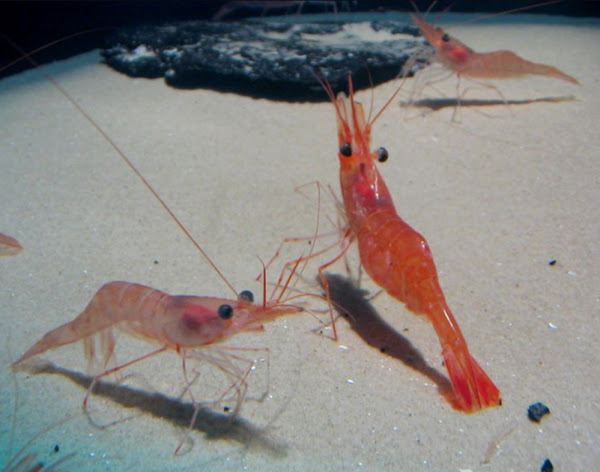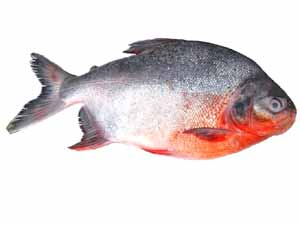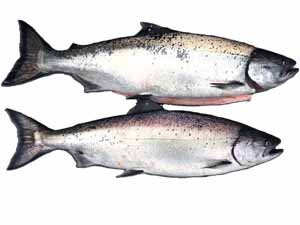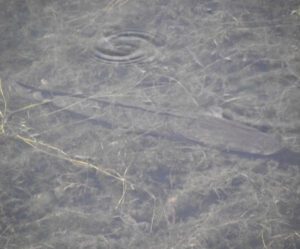The Northern shrimp is a species of caridean shrimp. It is also known as Coldwater prawn, Deepwater prawn, Deep-sea prawn, Pink shrimp, Crevette Nordique, Northern prawn and Great northern prawn.
It is mainly found in the cold parts of the Atlantic and Pacific Oceans. In the Pacific, it is found from Japan, through the Sea of Okhotsk, across the Bering Strait, and as far south in North America as Washington State. Read some more information about this species below.
Northern Shrimp Full Information
Northern shrimp are a popular seafood item, known for their sweet, delicate flavor and firm texture.
Northern shrimp are small in size, typically ranging from 1-3 inches in length. They have a pinkish-gray coloration and a translucent body with two pairs of antennae and five pairs of legs.
Northern shrimp are known for their unique reproductive cycle, which involves a yearly migration from deep, offshore waters to shallow, nearshore areas to mate and lay eggs.
Northern shrimp are harvested commercially in several countries, including Canada, Iceland, Norway, and Russia. The fishing season for northern shrimp typically runs from late winter to early summer, when the shrimp migrate to shallower waters to spawn. The shrimp are typically caught using trawling nets, which are dragged along the ocean floor to collect the shrimp.
Northern shrimp are highly valued for their sweet, delicate flavor and firm texture. They are commonly used in a variety of dishes, including soups, stews, and seafood cocktails. Northern shrimp are also popular as a topping for salads and sandwiches.
Despite their popularity, northern shrimp face several challenges, including overfishing and climate change. Overfishing can lead to declines in shrimp populations, while climate change can affect the timing and location of shrimp migrations, making it harder for fishermen to find and catch them.
To address these challenges, many countries have implemented sustainable fishing practices to ensure the long-term health of northern shrimp populations. These practices may include limits on the number of shrimp that can be caught, restrictions on fishing gear, and the use of selective harvesting techniques to minimize the impact on other marine species.
Overall, northern shrimp are a popular and important seafood item, prized for their sweet flavor and firm texture. However, the challenges they face, including overfishing and climate change, highlight the importance of sustainable fishing practices and responsible seafood consumption to ensure the long-term health of this important resource.
Northern Shrimp Characteristics
Northern shrimp are one of the most important commercial species of shrimp, and their unique characteristics make them an interesting subject for study.
Their small size, translucent color, and delicate texture make them popular in the culinary world, while their behavior and life cycle provide insight into the ecology of cold-water environments. With careful management, the Northern shrimp fishery can continue to provide a valuable source of food and economic activity.
Size and Appearance
Northern shrimp are small in size, growing up to a maximum length of 8 cm. They have a translucent pink or light red color, and their bodies are segmented, ending in a tail fan.

Their carapace, or outer shell, is thin and easily removed. They have long antennae, which are used for sensory purposes and to capture food.
Habitat and Distribution
Northern shrimp are found in cold waters at depths ranging from 30 to 500 meters. They are commonly found in the North Atlantic Ocean, along the coasts of Iceland, Greenland, Norway, and Canada. They are also found in the Arctic Ocean and adjacent seas.
Diet and Behavior
Northern shrimp are omnivorous and feed on a variety of planktonic organisms, including copepods and other small crustaceans. They are typically nocturnal and bury themselves in the sediment during the day. They are known to be relatively slow swimmers, and they use their long antennae to navigate their environment.
Reproduction and Lifecycle
Northern shrimp reproduce through internal fertilization, with the male transferring sperm to the female through specialized appendages. Females can lay up to 3,000 eggs per year, which are carried on their legs until they hatch. Larvae go through several developmental stages before becoming juveniles, which reach maturity in 2-3 years.
Commercial Importance
Northern shrimp are one of the most commercially important species of shrimp. They are caught using trawl nets, and their delicate texture and sweet flavor make them popular in many cuisines. The fishery is regulated by various organizations to ensure sustainable harvesting practices.
Uses
This is mainly used for food. But it is also used for obtaining shrimp alkaline phosphatase (SAP), which is an enzyme used in molecular biology.
Special Notes
The Northern shrimp is one of the most important carideans of the North Atlantic. It is an important food resource, and has been widely fished since the early 1900s in Norway.
It is sold peeled, cooked and frozen in bags in supermarkets in Canada. These shrimp have a short life, which contributes to a variable stock on a yearly basis.
Although the species is not considered overfished due to a large amount reported and a large amount harvested.
Currently the countries with largest catches are Canada and Greenland. The annual harvest limit is set to 164,000 tonnes in Canada.
The Northern shrimp generally live at 20-1330 meter water depths. They prefer to live on soft muddy bottoms, with a temperature of 0–8 °C. Their average lifespan is about 8 years. However, review full breed profile of this shrimp in the table below.
| Name | Northern Shrimp |
| Kingdom | Animalia |
| Phylum | Arthropoda |
| Class | Malacostraca |
| Order | Decapoda |
| Family | Pandalidae |
| Genus | Pandalus |
| Species | P. borealis |
| Binomial Name | Pandalus borealis |
| Other Names | Also known as Coldwater prawn, Deepwater prawn, Deep-sea prawn, Pink shrimp, Crevette Nordique, Northern prawn and Great northern prawn. |
| Breed Purpose | Mainly food |
| Special Notes | One of the most important carideans in the North Atlantic, an important food resource, has been widely fished since the early 1900s in Norway, used mainly for food, sold cooked, peeled and frozen, countries with largest catches are Canada and Greenland, 8 years average lifespan |
| Breeding Method | Natural |
| Climate Tolerance | Native climates |
| Body Color | Pink |
| Rarity | Common |
| Availability | Worldwide |






